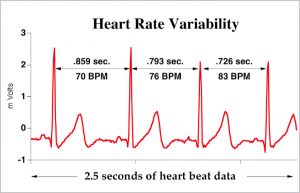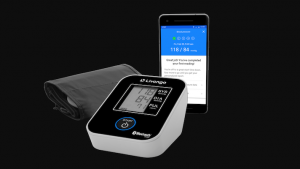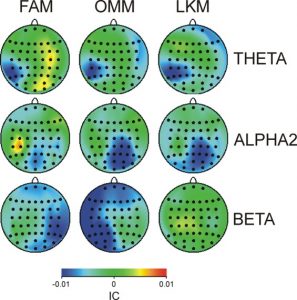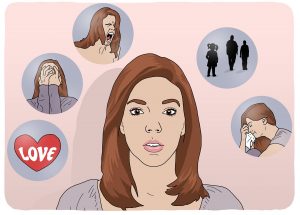Improve Sleep Quality in Women with Sleep Disturbance with Yoga
By John M. de Castro, Ph.D.
“When people who have insomnia perform yoga on a daily basis, they sleep for longer, fall asleep faster, and return to sleep more quickly if they wake up in the middle of the night.” – Sleep Foundation
Modern society has become more around-the-clock and more complex producing considerable pressure and stress on the individual. The advent of the internet and smart phones has exacerbated the problem. The resultant stress can impair sleep. Indeed, it is estimated that over half of Americans sleep too little due to stress. As a result, people today sleep 20% less than they did 100 years ago. Not having a good night’s sleep has adverse effects upon the individual’s health, well-being, and happiness. It has been estimated that 30 to 35% of adults have brief symptoms of insomnia, 15 to 20% have a short-term insomnia disorder, and 10% have chronic insomnia
Sleep difficulties are associated with decreased alertness and a consequent reduction in performance of even simple tasks, decreased quality of life, increased difficulties with memory and problem solving, increased likelihood of accidental injury including automobile accidents, and increased risk of dementia and Alzheimer’s disease. It also can lead to anxiety about sleep itself. This is stressful and can produce even more anxiety about being able to sleep. About 4% of Americans revert to sleeping pills. But these do not always produce high quality sleep and can have problematic side effects. So, there is a need to find better methods to treat insomnia. Mindfulness-based practices have been reported to improve sleep amount and quality and help with insomnia. It makes sense to explore the effectiveness of different mindfulness techniques to improve sleep quality.
In today’s Research News article “The effect of yoga on sleep quality and insomnia in women with sleep problems: a systematic review and meta-analysis.” (See summary below or view the full text of the study at: https://www.ncbi.nlm.nih.gov/pmc/articles/PMC7193366/), Wang and colleagues review, summarize, and perform a meta-analysis of the published research literature on the effectiveness of yoga practice for the improvement of sleep in women with sleep problems. They found 19 randomized controlled trials with a total of 1832 participants.
They report that the published studies found that yoga practice produced a significant reduction in sleep problems but not insomnia and a significant increase in sleep quality. Healthy patients had greater improvements in sleep quality than breast cancer patients and peri/postmenopausal women had significantly less improvement in sleep quality.
The review found that in general yoga practice improves sleep in women with sleep problems except insomnia. The included studies did not have a control condition involving exercise. So, it is not clear if the exercise provided by yoga or a yoga specific factor was responsible for the sleep improvements. Future research should compare yoga practice to another form of exercise, e.g. brisk walking, in improving sleep. In addition, yoga practice does not appear to improve sleep when the disturbance is caused by a physical issue such as breast cancer or menopause. This suggests that yoga works best with sleep disturbances caused by psychological issues.
So, improve sleep quality in women with sleep disturbance with yoga.
“As a result of the activity’s physical, emotional, and mental relaxation, practitioners of yoga nidra report sleeping better at night, and tend to suffer less with issues such as racing thoughts.” – Sleep.org
CMCS – Center for Mindfulness and Contemplative Studies
This and other Contemplative Studies posts are also available on Google+ https://plus.google.com/106784388191201299496/posts and on Twitter @MindfulResearch
Study Summary
Wang, W. L., Chen, K. H., Pan, Y. C., Yang, S. N., & Chan, Y. Y. (2020). The effect of yoga on sleep quality and insomnia in women with sleep problems: a systematic review and meta-analysis. BMC psychiatry, 20(1), 195. https://doi.org/10.1186/s12888-020-02566-4
Abstract
Background
To examine the effectiveness and safety of yoga of women with sleep problems by performing a systematic review and meta-analysis.
Methods
Medline/PubMed, ClinicalKey, ScienceDirect, Embase, PsycINFO, and the Cochrane Library were searched throughout the month of June, 2019. Randomized controlled trials comparing yoga groups with control groups in women with sleep problems were included. Two reviewers independently evaluated risk of bias by using the risk of bias tool suggested by the Cochrane Collaboration for programming and conducting systematic reviews and meta-analyses. The main outcome measure was sleep quality or the severity of insomnia, which was measured using subjective instruments, such as the Pittsburgh Sleep Quality Index (PSQI), Insomnia Severity Index (ISI), or objective instruments such as polysomnography, actigraphy, and safety of the intervention. For each outcome, a standardized mean difference (SMD) and confidence intervals (CIs) of 95% were determined.
Results
Nineteen studies in this systematic review included 1832 participants. The meta-analysis of the combined data conducted according to Comprehensive Meta-Analysis showed a significant improvement in sleep (SMD = − 0.327, 95% CI = − 0.506 to − 0.148, P < 0.001). Meta-analyses revealed positive effects of yoga using PSQI scores in 16 randomized control trials (RCTs), compared with the control group in improving sleep quality among women using PSQI (SMD = − 0.54; 95% CI = − 0.89 to − 0.19; P = 0.003). However, three RCTs revealed no effects of yoga compared to the control group in reducing insomnia among women using ISI (SMD = − 0.13; 95% CI = − 0.74 to 0.48; P = 0.69). Seven RCTs revealed no evidence for effects of yoga compared with the control group in improving sleep quality for women with breast cancer using PSQI (SMD = − 0.15; 95% CI = − 0.31 to 0.01; P = 0.5). Four RCTs revealed no evidence for the effects of yoga compared with the control group in improving the sleep quality for peri/postmenopausal women using PSQI (SMD = − 0.31; 95% CI = − 0.95 to 0.33; P = 0.34). Yoga was not associated with any serious adverse events.
Discussion
This systematic review and meta-analysis demonstrated that yoga intervention in women can be beneficial when compared to non-active control conditions in term of managing sleep problems. The moderator analyses suggest that participants in the non-breast cancer subgroup and participants in the non-peri/postmenopausal subgroup were associated with greater benefits, with a direct correlation of total class time with quality of sleep among other related benefits.
https://www.ncbi.nlm.nih.gov/pmc/articles/PMC7193366/









